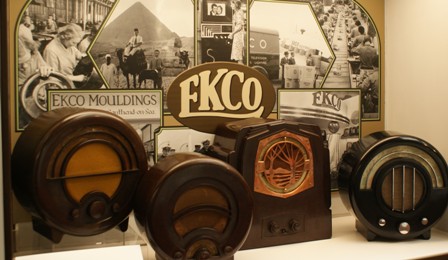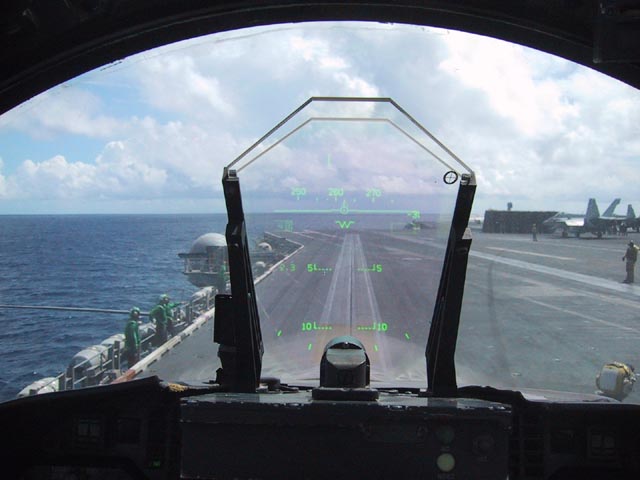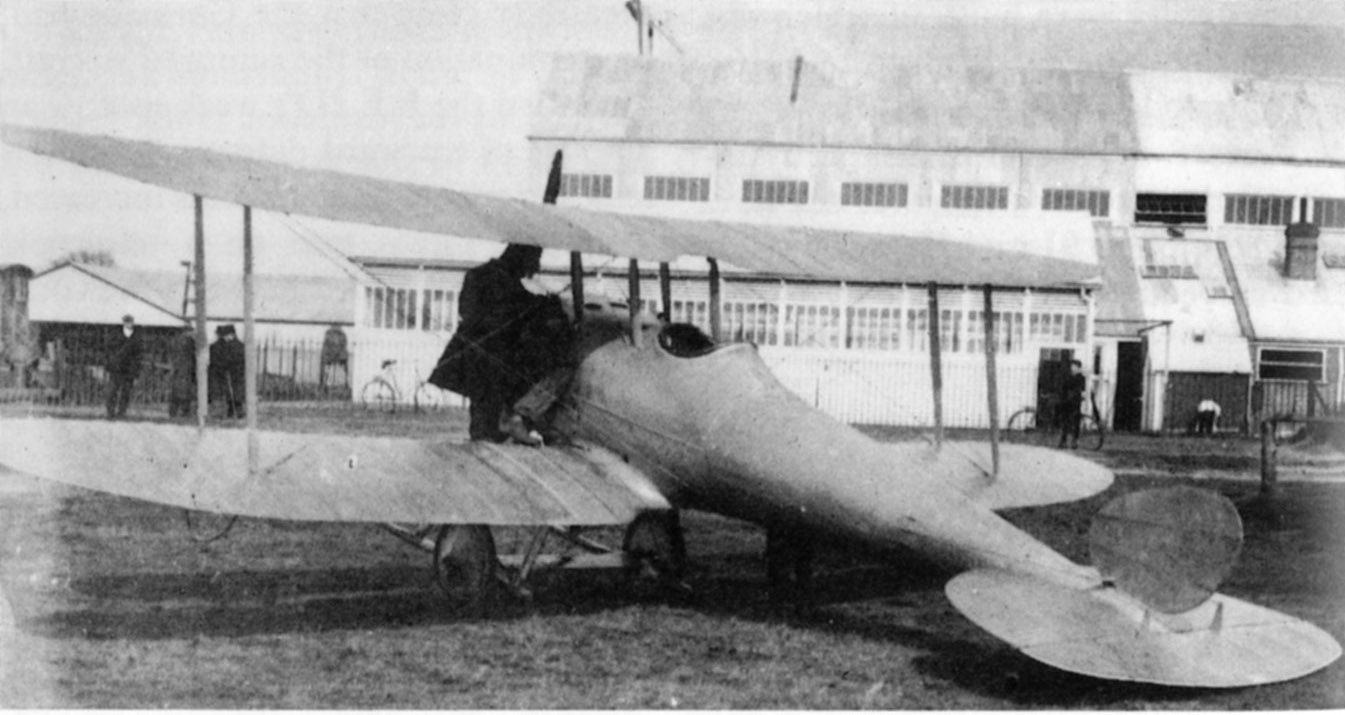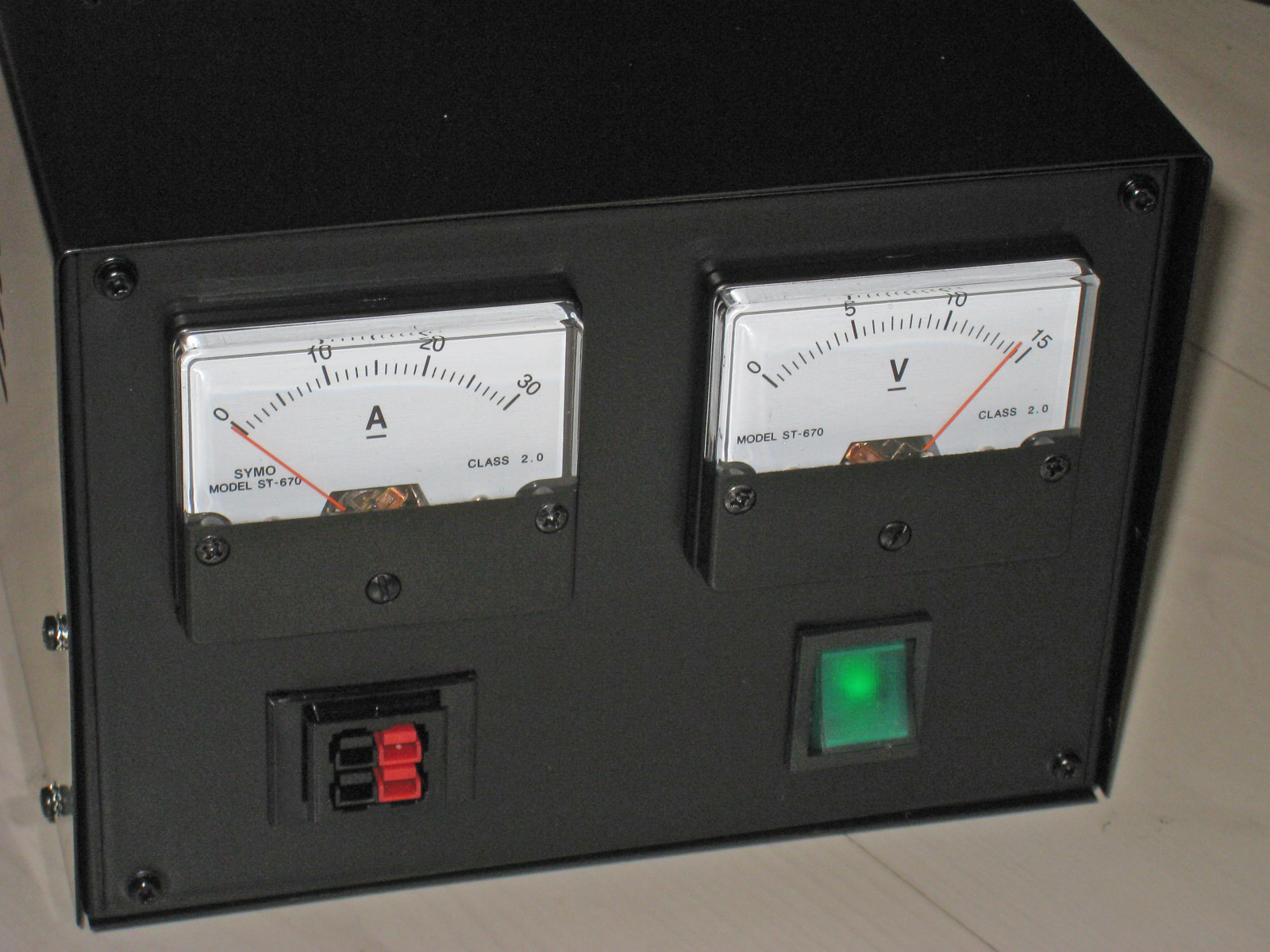|
Green Willow
Radar, Airborne Interception, Mark 20, AI.20 for short, also known by its rainbow codename Green Willow, was a prototype Airborne Interception radar developed by EKCO for the English Electric Lightning interceptor aircraft. It was ordered as a backup system in case the more advanced AIRPASS radar from Ferranti failed to develop, but when AIRPASS entered testing in 1955, AI.20 was dropped. The system was used, almost unchanged, as the basis for the Red Steer tail warning radar used in the Handley Page Victor and Avro Vulcan strategic bombers. History When the English Electric Lightning project first began, existing Airborne Interception radar systems were generally just more powerful versions of their World War II counterparts, using newer magnetron and klystron-based microwave tubes and more sensitive receivers, but otherwise using the same mechanical scanning concepts and simplified processing that generally required a dedicated crewmember to operate. Some British AI ... [...More Info...] [...Related Items...] OR: [Wikipedia] [Google] [Baidu] |
EKCO
EKCO (from Eric Kirkham Cole Limited) was a British electronics company producing radio and television sets from 1924 until 1960. Expanding into plastic production for its own use, Ekco Plastics produced both radio cases and later domestic plastic products; the plastics company became Lin Pac Mouldings Ltd. Early history The company's founder Eric Kirkham Cole was born on 4 July 1901 at Prittlewell, Southend-on-Sea, Essex, and was educated at Southend Day Technical School, followed by a three-year apprenticeship. Cole and his future wife Muriel Bradshaw started out making radio sets in 1924.Oxford Dictionary of National Biography: Cole, Eric Kirkham by Rowland F. Pocock William Streatfield Verrells, a schoolmaster and freelance journalist from Southend-on-Sea, wrote an article in a local newspaper asking if it was possible to power a radio set from the mains electricity supply rather than batteries. Cole saw a possible business opportunity and set about building his battery e ... [...More Info...] [...Related Items...] OR: [Wikipedia] [Google] [Baidu] |
Heads Up Display
A head-up display, or heads-up display, also known as a HUD (), is any see-through display, transparent display that presents data without requiring users to look away from their usual viewpoints. The origin of the name stems from a Aircraft pilot, pilot being able to view information with the head positioned "up" and looking forward, instead of angled down looking at lower instruments. A HUD also has the advantage that the pilot's eyes do not need to Accommodation (eye), refocus to view the outside after looking at the optically nearer instruments. Although they were initially developed for military aviation, HUDs are now used in commercial aircraft, automobiles, and other (mostly professional) applications. Head-up displays were a precursor technology to augmented reality (AR), incorporating a subset of the features needed for the full AR experience, but lacking the necessary registration and tracking between the virtual content and the user's real-world environment. Overvie ... [...More Info...] [...Related Items...] OR: [Wikipedia] [Google] [Baidu] |
Royal Aircraft Establishment
The Royal Aircraft Establishment (RAE) was a British research establishment, known by several different names during its history, that eventually came under the aegis of the Ministry of Defence (United Kingdom), UK Ministry of Defence (MoD), before finally losing its identity in mergers with other institutions. The first site was at Farnborough Airfield ("RAE Farnborough") in Hampshire to which was added a second site RAE Bedford (Bedfordshire) in 1946. In 1988 it was renamed the Royal Aerospace Establishment (RAE) before merging with other research entities to become part of the new Defence Research Agency in 1991. History In 1904–1906 the Army Balloon Factory, which was part of the Army School of Ballooning, under the command of Colonel James Templer (balloon aviator), James Templer, relocated from Aldershot to the edge of Farnborough Common in order to have enough space to inflate the new "dirigible balloon" or airship which was then under construction.Walker, P; Early Avi ... [...More Info...] [...Related Items...] OR: [Wikipedia] [Google] [Baidu] |
Hawker Hunter
The Hawker Hunter is a transonic British jet-powered fighter aircraft that was developed by Hawker Aircraft for the Royal Air Force (RAF) during the late 1940s and early 1950s. It was designed to take advantage of the newly developed Rolls-Royce Avon turbojet engine and the swept wing, and was the first jet-powered aircraft produced by Hawker to be procured by the RAF. On 7 September 1953, the modified first prototype broke the world air speed record for aircraft, achieving a speed of . The single-seat Hunter was introduced to service in 1954 as a manoeuvrable day interceptor aircraft, quickly succeeding first-generation jet fighters in RAF service such as the Gloster Meteor and the de Havilland Venom. The all-weather/night fighter role was filled by the Gloster Javelin. Successively improved variants of the type were produced, adopting increasingly more capable engine models and expanding its fuel capacity amongst other modifications being implemented. Hunters were also us ... [...More Info...] [...Related Items...] OR: [Wikipedia] [Google] [Baidu] |
RAF Defford
Royal Air Force Defford or more simply RAF Defford is a former Royal Air Force station located northwest of Defford, Worcestershire, England. History Second World War At the outbreak of the Second World War, Croome Court and its surrounding estate was requisitioned by the Ministry of Works. The main palladian house was initially leased for a year to the Dutch Government as a possible refuge for Queen Wilhelmina of the Netherlands to escape the Nazi occupation of the Netherlands. However, evidence shows that they only stayed for two weeks at most, and later emigrated to Canada. Construction of RAF Defford was started at the outbreak of war, and completed in 1941. For a few months the airfield was used as a satellite station by the Vickers Wellington bombers of No. 23 Operational Training Unit RAF (OTU), based a few miles away at RAF Pershore. In May 1942, the Telecommunications Research Establishment (TRE), responsible for radar research and development, and located near ... [...More Info...] [...Related Items...] OR: [Wikipedia] [Google] [Baidu] |
AI Mark VIII
Radar, Airborne Interception, Mark VIII, or AI Mk. VIII for short, was the first operational microwave-frequency air-to-air radar. It was used by Royal Air Force night fighters from late 1941 until the end of World War II. The basic concept, using a moving parabolic antenna to search for targets and track them accurately, remained in use by most airborne radars well into the 1980s. Low-level development began in 1939 but was greatly sped after the introduction of the cavity magnetron in early 1940. This operated at 9.1 cm wavelength (3 GHz), much shorter than the 1.5 m wavelength of the earlier AI Mk. IV. Shorter wavelengths allowed it to use smaller and much more directional antennas. Mk. IV was blinded by the reflections off the ground from its wide broadcast pattern, which made it impossible to see targets flying at low altitudes. Mk. VIII could avoid this by keeping the antenna pointed upward, allowing it to see any aircraft at or above the horizon. The design ... [...More Info...] [...Related Items...] OR: [Wikipedia] [Google] [Baidu] |
Power Supply
A power supply is an electrical device that supplies electric power to an electrical load. The main purpose of a power supply is to convert electric current from a source to the correct voltage, current, and frequency to power the load. As a result, power supplies are sometimes referred to as electric power converters. Some power supplies are separate standalone pieces of equipment, while others are built into the load appliances that they power. Examples of the latter include power supplies found in desktop computers and consumer electronics devices. Other functions that power supplies may perform include limiting the current drawn by the load to safe levels, shutting off the current in the event of an electrical fault, power conditioning to prevent electronic noise or voltage surges on the input from reaching the load, power-factor correction, and storing energy so it can continue to power the load in the event of a temporary interruption in the source power (uninterruptible ... [...More Info...] [...Related Items...] OR: [Wikipedia] [Google] [Baidu] |
Projection Television
Large-screen television technology (colloquially big-screen TV) developed rapidly in the late 1990s and 2000s. Prior to the development of thin-screen technologies, rear-projection television was standard for larger displays, and jumbotron, a non-projection video display technology, was used at stadiums and concerts. Various thin-screen technologies are being developed, but only liquid crystal display (LCD), plasma display (PDP) and Digital Light Processing (DLP) have been publicly released. Recent technologies like organic light-emitting diode (OLED) as well as not-yet-released technologies like surface-conduction electron-emitter display (SED) or field emission display (FED) are in development to replace earlier flat-screen technologies in picture quality. Large-screen technologies have almost completely displaced cathode-ray tubes (CRT) in television sales due to the necessary bulkiness of cathode-ray tubes. The diagonal screen size of a CRT television is limited to about ... [...More Info...] [...Related Items...] OR: [Wikipedia] [Google] [Baidu] |
Electron Gun
An electron gun (also called electron emitter) is an electrical component in some vacuum tubes that produces a narrow, collimated electron beam that has a precise kinetic energy. The largest use is in cathode-ray tubes (CRTs), used in nearly all television sets, computer displays and oscilloscopes that are not flat-panel displays. They are also used in field-emission displays (FEDs), which are essentially flat-panel displays made out of rows of extremely small cathode-ray tubes. They are also used in microwave linear beam vacuum tubes such as klystrons, inductive output tubes, travelling wave tubes, and gyrotrons, as well as in scientific instruments such as electron microscopes and particle accelerators. Electron guns may be classified by the type of electric field generation (DC or RF), by emission mechanism (thermionic, photocathode, cold emission, plasmas source), by focusing (pure electrostatic or with magnetic fields), or by the number of electrodes. Characteristics ... [...More Info...] [...Related Items...] OR: [Wikipedia] [Google] [Baidu] |
Cathode Ray Tube
A cathode-ray tube (CRT) is a vacuum tube containing one or more electron guns, which emit electron beams that are manipulated to display images on a phosphorescent screen. The images may represent electrical waveforms ( oscilloscope), pictures (television set, computer monitor), radar targets, or other phenomena. A CRT on a television set is commonly called a picture tube. CRTs have also been used as memory devices, in which case the screen is not intended to be visible to an observer. The term ''cathode ray'' was used to describe electron beams when they were first discovered, before it was understood that what was emitted from the cathode was a beam of electrons. In CRT television sets and computer monitors, the entire front area of the tube is scanned repeatedly and systematically in a fixed pattern called a raster. In color devices, an image is produced by controlling the intensity of each of three electron beams, one for each additive primary color (red, green, and bl ... [...More Info...] [...Related Items...] OR: [Wikipedia] [Google] [Baidu] |
Supermarine Swift
The Supermarine Swift is a British single-seat jet fighter aircraft that was operated by the Royal Air Force (RAF). It was developed and manufactured by Supermarine during the 1940s and 1950s. The Swift featured many of the new jet age innovations, such as a swept wing. On 26 September 1953, a Swift F.4 piloted by Commander Mike Lithgow broke the world absolute speed record, reaching a speed of 737.7 mph (1,187 km/h). After a protracted development period, the Swift entered service as an interceptor aircraft with the RAF in 1954. However, due to a spate of accidents incurred by the type, the Swift was grounded for a time, and had a relatively brief service life. The problems with the Swift led to a public scandal surrounding the development and performance of the aircraft, harming the reputations of the British government, the RAF, and the British aircraft industry. Ultimately, the less problematic Hawker Hunter assumed much of the role intended for the Swift and on ... [...More Info...] [...Related Items...] OR: [Wikipedia] [Google] [Baidu] |
Fireflash
Fireflash was the United Kingdom's first air-to-air guided missile to see service with the Royal Air Force. Constructed by Fairey Aviation, the missile utilised radar beam riding guidance. Fireflash had relatively limited performance and required the launching aircraft to approach the target from a limited angle astern. The approximately 300 production Fireflash missiles were mostly expended as a training weapon to familiarize RAF pilots with missile firing. It was declared operational very briefly in 1957, thus becoming the RAF's first operational air-to-air missile, but was quickly replaced by the de Havilland Firestreak the next year. Development Red Hawk In January 1945 the Air Ministry issued Operational Requirement OR.1056, given the Ministry of Supply rainbow code "Red Hawk", for an air-to-air missile. The basic design was based on studies carried out at the Royal Aircraft Establishment (RAE) on earlier weapons. Their experiments with the manually-guided Air Spaniel ... [...More Info...] [...Related Items...] OR: [Wikipedia] [Google] [Baidu] |










